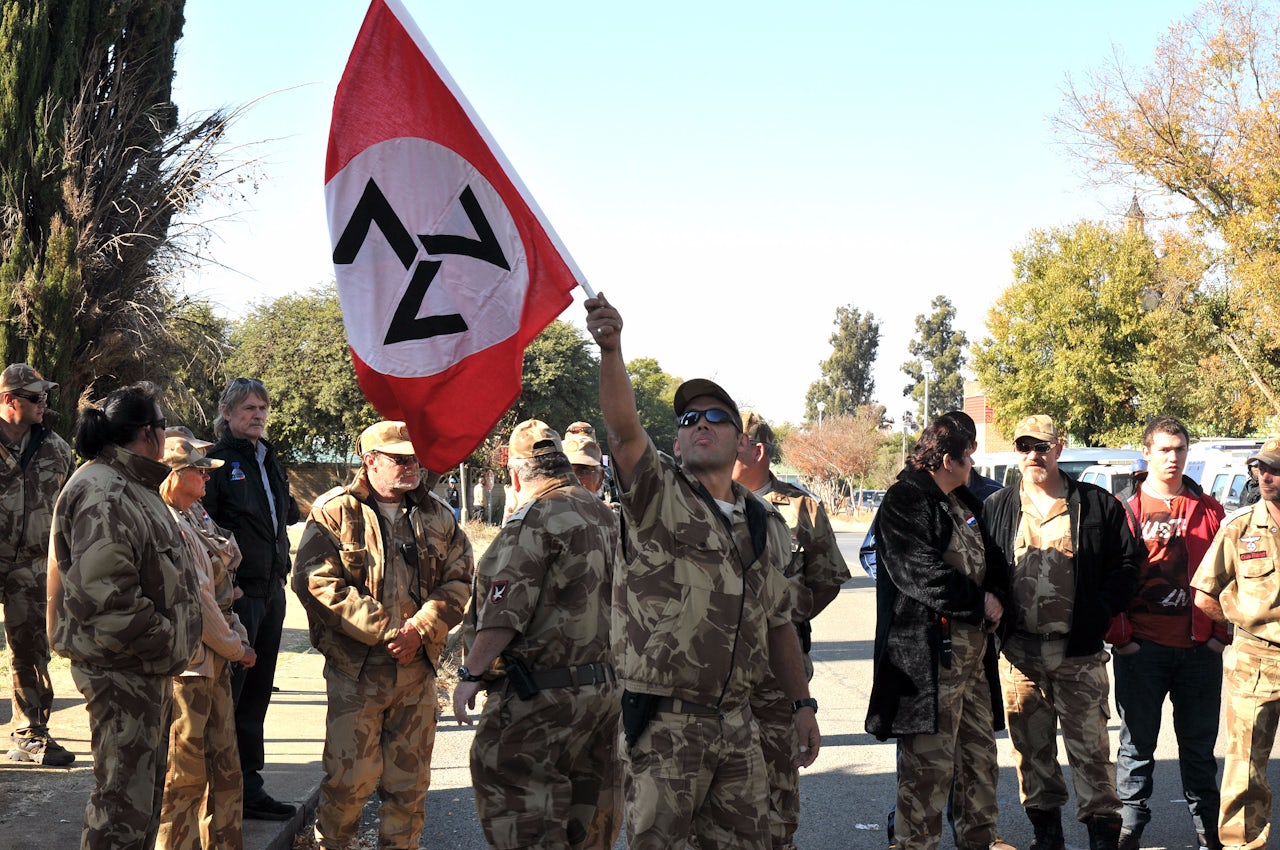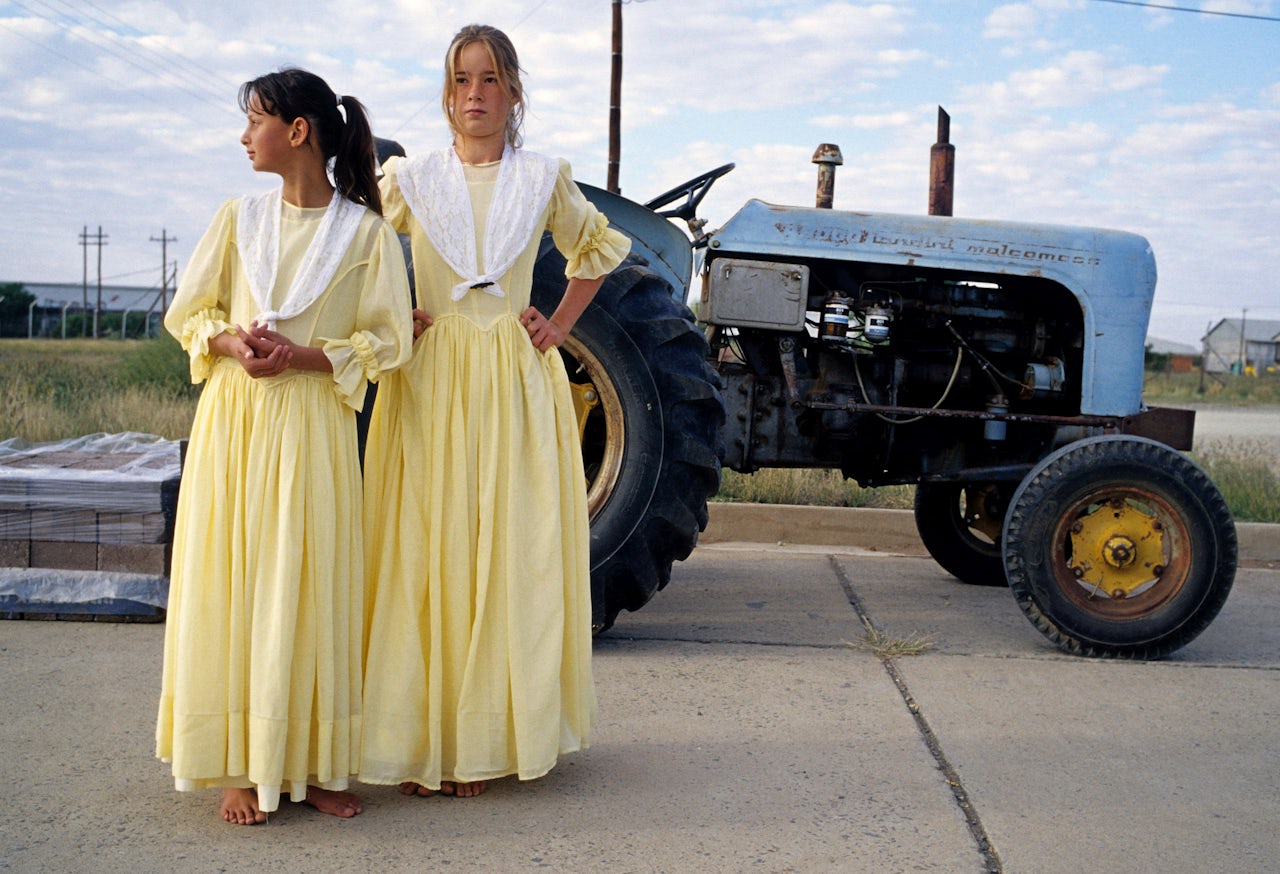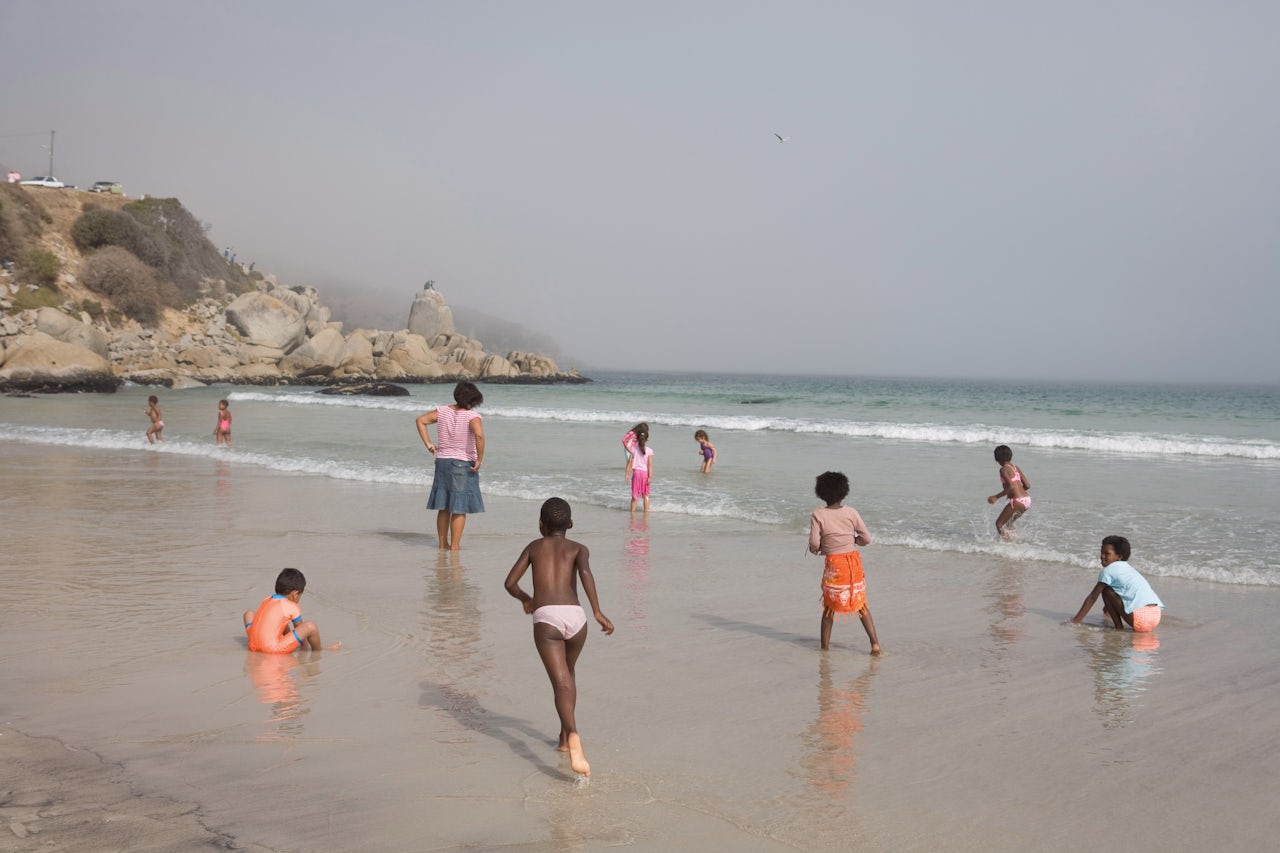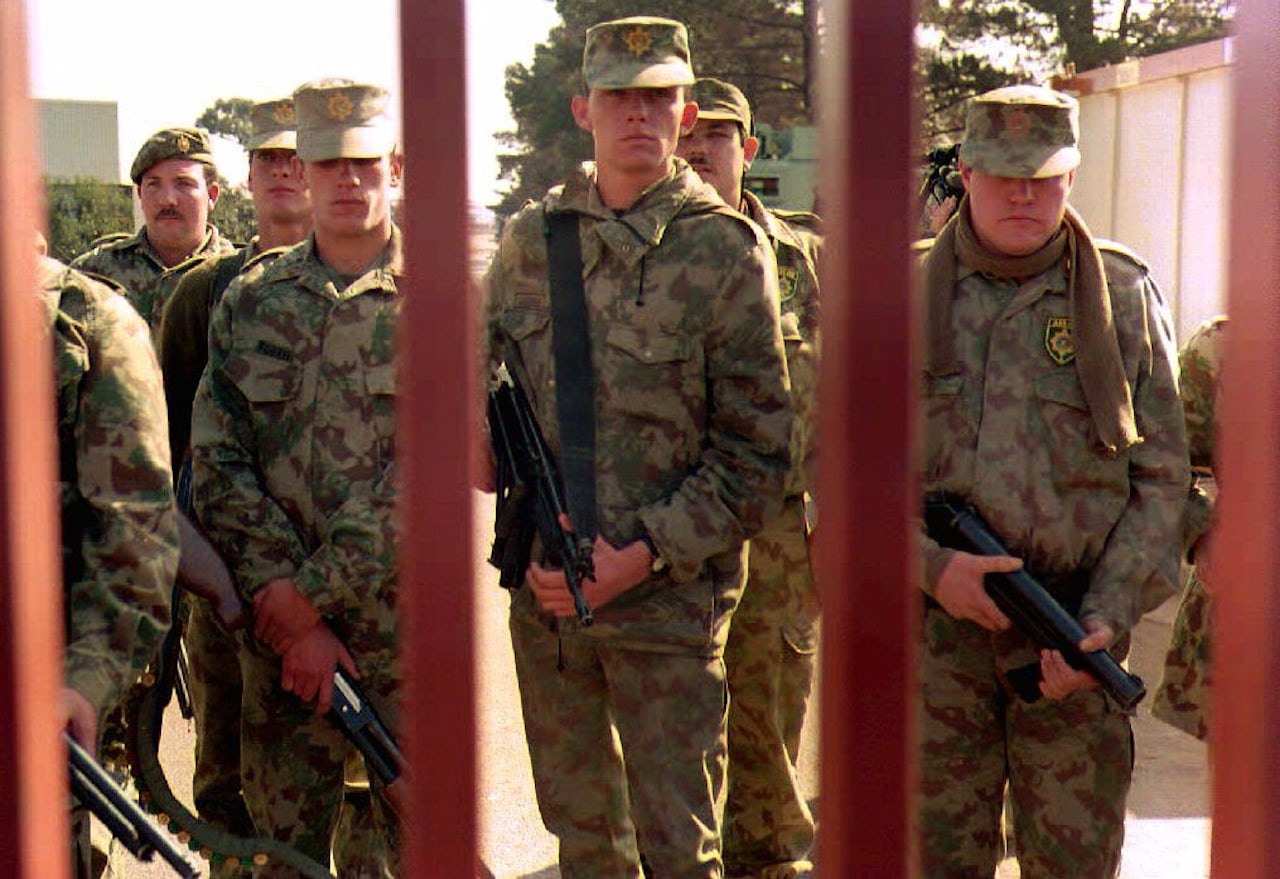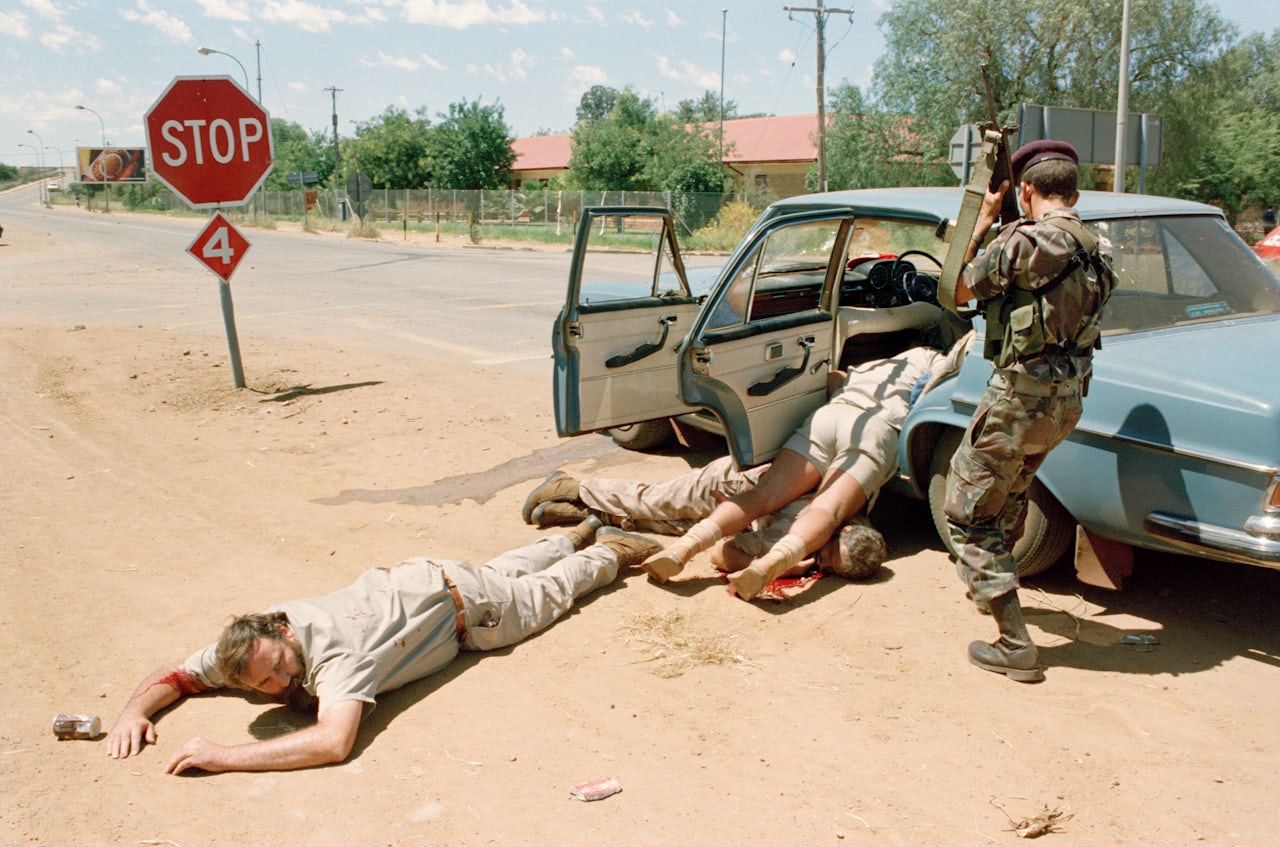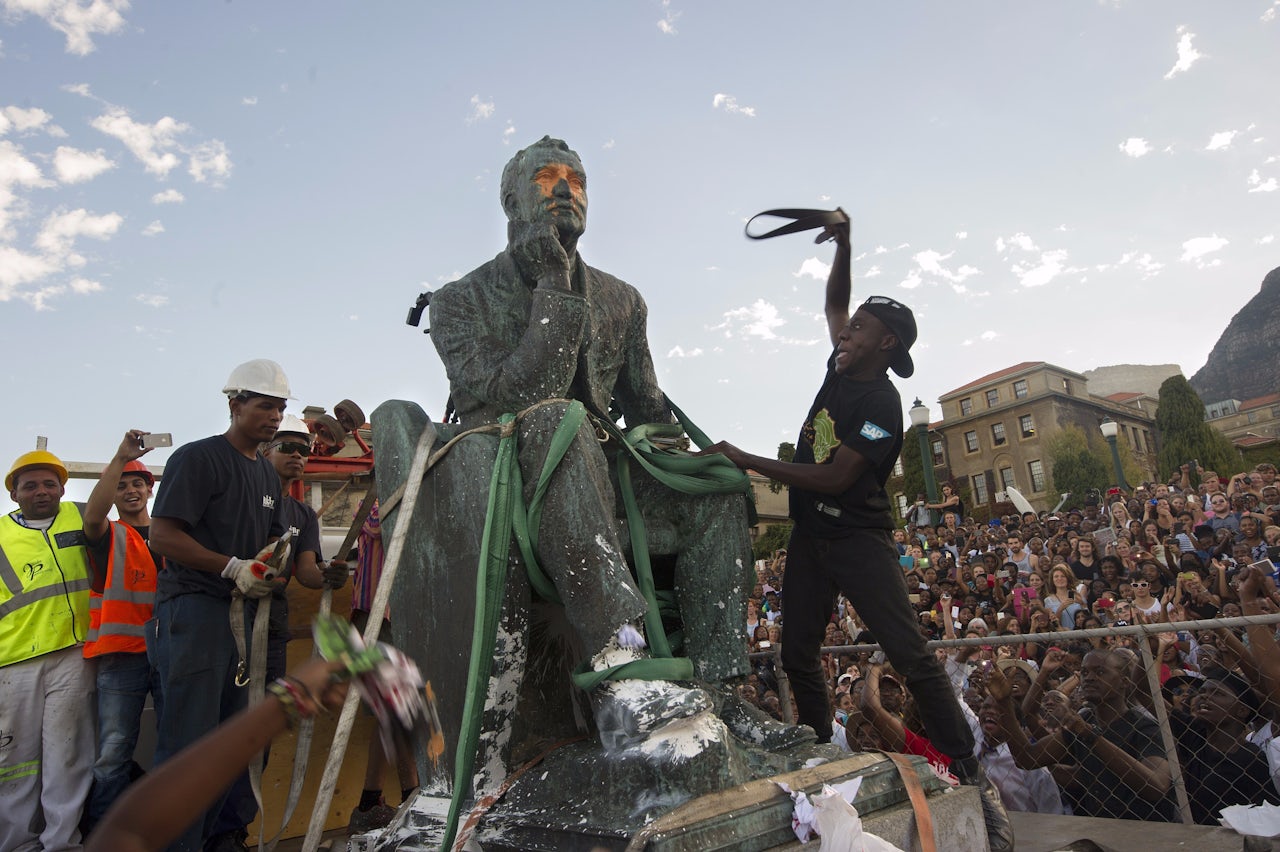Despatch is a small town in the Eastern Cape, South Africa’s poorest province. A friend’s mother grew up in there in the ‘60s, when the apartheid regime that fell in 1994 was at the height of its power. Organized black resistance had been crushed, the legal pillars enabling systemized black displacement and disenfranchisement stood firm. The ruling National Party, which implemented apartheid when it came to power in 1948, had widespread electoral support. At her whites-only, Afrikaans speaking school, my friend’s mother was given instructions about what to do if a black person happened to be walking towards her on the sidewalk. As a white child, she was taught that the sidewalk belonged to her. If the black adult walking towards her failed to grasp this, she was taught to look him in the eye to remind him of his place, and to keep staring at him until he stepped into the road to let her pass.
A month ago, the leader of the Freedom Front Plus party, Pieter Groenewald, visited Despatch. The “FF+,” as it is known, is a white Afrikaner nationalist party formed during the run-up to South Africa’s first democratic elections 27 years ago. It currently holds four seats in parliament, elected on a platform of opposition to affirmative action, advocacy for land reform benefiting white Afrikaners, and a commitment to self-determination and the protection of “minority rights.” For the FF+, the right to self-determination means the right to establish whites-only enclaves, places where people of other races may not live or work.
It was Groenewald’s first visit to Despatch. To cheers and applause, he told the crowd that it was long past time to set down the burden of white guilt, and that he refused to take responsibility for anything that had happened before apartheid fell: "Everywhere in the world, things happened that should not have happened. These feelings of guilt have to be shaken off now… I am a white man and I am not shy about my history."
Earlier this year, in a parliamentary debate over land reform, Groenewald warned that land expropriation would result in “a civil war.” In parliament, he was booed. His apocalyptic rhetoric presumably found a more sympathetic audience in Despatch. What would happen to white people, he asked, when South Africa was “nationalized”? He wasn’t suggesting that they move to Orania (a constitutionally protected whites-only town in the Northern Cape) — or not just yet. He urged them to consider it, though, and perhaps to go even further. They needed to start thinking about establishing a tenth province for self-governance.
The crowd, presumably, cheered some more, although it is difficult to know for sure, because the incident barely made the news. I saw two articles about it, neither of which gave any information about the size of the crowd, or the nature of the event, or what Groenewald was doing in Despatch in the first place. I only heard about it because a friend sent me a link with the subject line “FF+ are finally losing the plot.” In his tenure as party leader, Groenewald seems to have chiefly confined himself to resistance to land expropriation, and making accusations of “reverse racism.” The tenth province speech was something of a departure for him.
It says something about South Africa and its past that a party leader openly speculating about moving to a whites-only enclave was hardly discussed in the country, except in a mocking manner. Laughter might seem like an inappropriate response, and it is, really, but the speech had its humorous aspects. Groenewald’s address outlined his notions of the utopia that awaited white people in the tenth province: no affirmative action, satellite dishes for everyone, and a 4x4 in every driveway. He reassured his audience that none of them would be driving around in ox wagons, as if to ward off the natural assumption that this might be the case. The idea of a lot of terrible racists believing that “not traveling in a covered wagon pulled by oxen” was the apex of modern living made me laugh for a few days, and then I forgot about it, as did most of the people I know.
These discussions about ethnic nationalism and white supremacy, at least of the kinds that the Richard Spencers and Milo Yiannopouloses have made their lifes’ work in America, are nothing new to South Africans. Apartheid, as a national policy, was rooted in the idea that whites were superior, that they had a God-ordained right to the land, and that “racial mixing” would result in disaster. It’s almost inconceivable that a view to the right of that could exist, but it did. Afrikaner extremists feared that the apartheid government was too liberal, and that the only way to protect the Afrikaner people from extinction was to establish an independent Boer Republic. They believed that the land belonged to them by right of blood, and were prepared to go to war to defend it.
Today, Afrikaner extremism is often viewed as nothing more than an absurd spectacle. For many people, the response to bellowed rhetoric about tenth provinces is something like Can you believe these fucking losers are still at it. It’s easy to dismiss them as a joke, because they have been largely sidelined. But that fate didn’t always seem as inevitable as it does now. Eugene Terre’blanche is the clearest example of this. Terre’blanche — whose last name literally means white earth — was the leader of the Afrikaner Weerstandsbeweging, or AWB, a white supremacist separatist organisation which, at the height of its prominence in the 1980s, claimed to have a membership of 70,000. Terre’blanche and six other Neo-Nazis founded the party in 1973 in response to what they perceived as the increasingly liberal policies of the apartheid government under B.J. Vorster who, as prime minister, passed the Bantu Homelands Citizenship Act, the final step in legislative machinations which stripped black South Africans of their citizenship and made them residents of one of the nominally independent apartheid reservations, or “homelands,” in the agriculturally poorest areas of the country.
The AWB insignia looks like three black, squashed sevens arranged in a white circle on a red background. In its first manifesto, the organization stated that the sevens “stand in direct contrast to the 666 — figure of the anti-Christ and the animal of the Book of Revelations.” It looks exactly like a swastika, and it’s meant to. The AWB modeled itself directly on the Nazi party, a cult of personality led by a domineering, sentimental demagogue dedicated to the creation of a Volkstaat, an independent Afrikaner homeland. Its members wore uniforms with the swastika prominently displayed.
Terre’blanche was a prolific and terrible poet who used to bring himself to tears at rallies with recitations of his own poems. He had a knack for political spectacle and oratory about covenant and blood. He once publicly tarred and feathered an Afrikaans historian who questioned the nationalist myths about God’s personal investment in the survival of the Afrikaans people. He arrived at rallies on horseback, flanked by members of his masked security unit, the Aquila. The AWB had a paramilitary wing, the Ystergarde (“Iron Guard”), and Terre’blanche presided over parades and training sessions where they demonstrated their proficiency with weapons, on horseback, in preparation for the coming war. Terre’blanche presented himself as the anointed saviour of an embattled, persecuted people perpetually on the verge of annihilation.
Members of the AWB referred to him as die grootleier (“the great leader”), and cried at the mention of his name. It is sometimes difficult to remember that he was a real person — he was in so many ways an exaggerated caricature of a white supremacist. If you put him in a novel, you’d have had to tone him down. Nick Broomfield’s 1991 documentary The Leader, His Driver, and the Driver’s Wife gives a comprehensive picture of Terre’blanche at peak messianic bluster. His relationship with the media was always combative, but he provided sensational content. South Africa’s transition to democracy was a big story, and Terre’blanche could reliably be counted upon to do and say the kinds of things that an Afrikaner nationalist fanatically dedicated to the creation of a Volkstaat would be expected to.
In June of 1993, 2,000 members of the AWB and other far-right groups gathered outside the Kempton Park World Trade Centre outside Johannesburg, where the multi-party negotiations to end apartheid were taking place. Lead by Terre’blanche, the Ystergarde drove a tank through the building’s plate-glass windows. Hundreds of AWB men entered the building, waving guns and shouting slogans about their demands for an independent homeland. The talks were disrupted, but the event has been relegated to a footnote in the wider story of the chaotic and precarious transition to democracy, presumably because the AWB didn’t murder anyone that day.
In March 1994, Terre’blanche was part of a catastrophically failed attempt to prop up the puppet government of Bophutatswana, one of the apartheid homelands, the leader of which refused to participate in the election. Interviewed by a journalist who inquired about their presence, an AWB member replied that they were there to shoot black people (he used a racial epithet that is too vile to repeat). Things continued to intensify. In April of that year, Chris Hani, the leader of the South African Communist Party, was assassinated in his driveway by Janusz Walus, a Polish immigrant with strong ties to the AWB. Also in April, the AWB set off a series of bombs around Johannesburg, killing 21 people.
As horrific as these events were, it’s important to note that what Terre’blanche and the AWB did was nothing compared to what the apartheid government did to black people for 46 years. Although he might have wanted it, Terre’blanche didn’t have the power to implement the laws which stripped a country’s majority of their basic human rights. The state presided over 46 years of legally sanctioned barbarity, forced removals, deaths in detention, torture, disappearances, assassinations, poverty, and humiliation.
Even post-apartheid, South Africa is consistently measured as the the most unequal society in the world (this result is robust to differences in the nature of the inequality, and the way in which it is assessed). Terre’blanche and the AWB did not have a hope of wreaking that kind of devastation, as much as they may have wished it. It’s also true that Terre’blanche’s efforts to derail the democratic negotiation process were not nearly as effective as, say, the tactics of the Inkatha Freedom Party, the powerful Zulu traditionalist party that, with the covert assistance of the state, was responsible for multiple atrocities during the transition. The IFP boycotted the election until the last possible minute; two weeks before the election, its members murdered eight people handing out IEC pamphlets in Ndwedwe, near Durban. Terre’blanche didn’t have the power or the numbers to do what he wanted to do.
I was nine in 1994, though, and he gave me nightmares. On the news, on his horse, with his swastikas and his masked guards, screaming about more blood and more war. He was so obviously terrifying. But for the adults around me, he had by that time become a punchline, someone who could not seriously threaten the negotiation process. The failed coup in Bophutatswana had exposed the AWB’s incompetence, and shown that they were nothing to worry about any longer. Terre’blanche was an emblem of the far right’s grotesque stupidity, its irrelevance, its cartoonish fuck-ups, its inability to turn its bluster into action, its inability to be anything other than a disgusting joke told by a fat, racist alcoholic who loved to play dress-up. By 1994, he was a distraction, a media sensation who refused to acknowledge his own insignificance.
Terre’blanche is primarily remembered as a joke. Two things typically come up when people speak about him now. The first are the persistent allegations of his affair with Jani Allen, a columnist at South Africa’s biggest newspaper. People love this story. The psychotic Afrikaans right-winger and the English-speaking columnist with her sassy little newsboy cap, driving around in a Jeep and watching reenactments of Voortrekker battles won with the assistance of God. Terre’blanche’s leadership was rooted in his self-presentation as a Calvinist paragon of virtue. A scandal involving him cheating on his wife with a divorced, English-speaking member of the media did not sit at all well with his deeply religious followers. The story was covered extensively by the press, joyfully celebrated as conclusive evidence that he was a hypocrite and a fraud.
The other thing is the horse. In 2010, Terre’blanche was murdered on his farm by two of his workers in a drunken dispute over wages. His death, and the nature of it, briefly revived global interest in him, and I did not read a single obituary that failed to mention the incident in which he fell off his horse at a rally. “I have seen sacks of coal more elegantly mounted astride a black stallion, and one of the funniest images I hold in my mind from those old battles was of Terreblanche riding to a political meeting in Pretoria, and promptly falling off his horse on to his well-padded back-side,” went one. Ha! The leader of a murderous white supremacist organization who was directly responsible for the deaths of dozens of people couldn’t even ride a horse! What a JOKE.
It’s impossible to think about Terre’blanche and not think of what is happening in America today. He was, to some extent, a creation of the media, but the poisonous legacy he left is very real. In 2001, Terre’blanche was jailed for the assault and attempted murder of two black men, one of whom was left permanently physically and mentally disabled. He served three years in jail, leaving the prison in June 2004 (on his horse, of course). That same month, he came in at No. 25 on a list of “100 Great South Africans,” voted for by the public. He was placed ahead of several revered anti-apartheid activists, many of whom died in the struggle. After being released from prison, he retired to his farm, apparently deteriorating further into alcoholism, and giving few interviews until his murder.
Some jokes don’t age very well, and Terre’blanche is one of them. We laugh at the far right because it makes them seem less frightening, but it doesn’t make them any less dangerous. There are still AWB-affiliated military-style camps here, where white teenagers are told that the land belongs to them, that “white genocide” is underway, that they are biologically superior, and that if they happen to be walking past a black person on the sidewalk, they need to stare him straight in the eye until he remembers his place and steps into the road to let them pass. When Donald Trump was elected, Steyn van Ronge, the current leader of the AWB, sent him a message thanking him on behalf of “tens of thousands” of AWB members, and telling him he could rely on their support, if it came to it.
